Well folks, we made it through another one. While it would be a stretch to call 2022 a good year for those of us in the hacking and making community, the light at the end of the tunnel does seem decidedly brighter now than it did this time 365 days ago. It might even be safe to show some legitimate optimism for the year ahead, but then again I was counting on my Tesla stocks to be a long-term investment, so what the hell do I know about predicting the future.
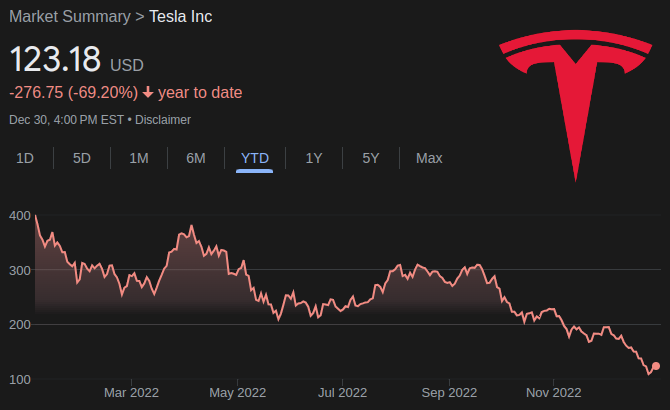
Thankfully hindsight always affords us a bit of wisdom, deservedly or otherwise. Now that 2022 is officially in the rearview mirror, it’s a good time to look back on the highs (and lows) of the last twelve months. Good or bad, these are the stories that will stick out in our collective minds when we think back on this period of our lives.
Oh sure, some might wish they could take the Men in Black route and forget these last few years ever happened, but it doesn’t work that way. In fact, given the tumultuous times we’re currently living in, it seems more likely than not that at some point we’ll find ourselves having to explain the whole thing to some future generation as they stare up at us wide-eyed around a roaring fire. Though with the way this timeline is going, the source of said fire might be the smoldering remains of an overturned urban assault robot that you just destroyed.
So while it’s still fresh in our minds, and before 2023 has a chance to impose any new disasters on us, let’s take a trip back through some of the biggest stories and themes of the last year.
The Chip Shortage Hits Home
Technically the origins of the chip shortage started well before 2022, and those with larger component appetites, like car manufacturers, started feeling the pressure some time ago. But 2022 marks the point where the problem got so large that even the hobbyist was impacted.
It’s to the point now that we’d wager few reading these words can say they’ve remained completely untouched. Case in point, have you tried to buy a Raspberry Pi recently? Unless you were willing to pay scalper prices on the second-hand market, they have been largely unobtainable for months. It’s bad enough that a service like rpilocator had to be created in the first place, but even with automated stock tracking, you’ve only got a few minutes to put your order in before they are sold out again.
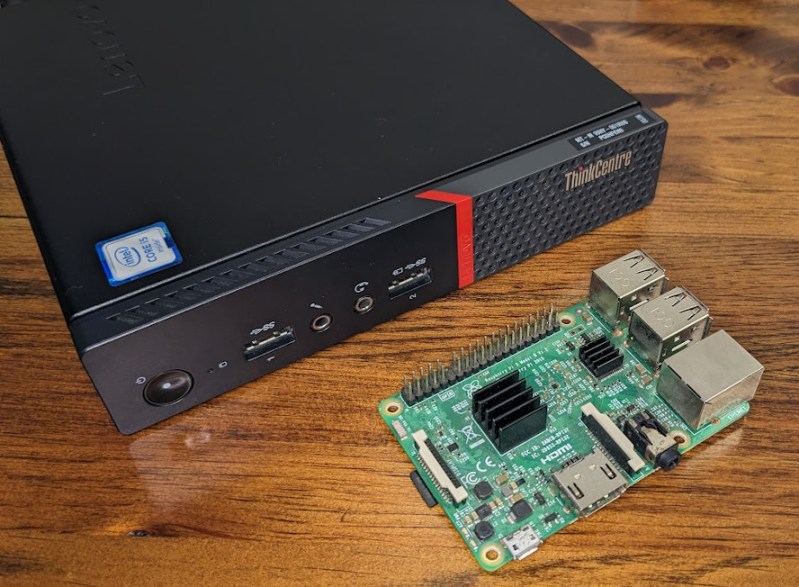
Without a steady supply of the cheap Linux single-board computers, many folks have switched over to buying old small form factor x86 computers for their projects. Just search eBay for “thin client” and take your pick — even the oldest ones you’re likely to see will still massively outperform the ARM chip in the Raspberry Pi.
There’s a certain irony to this, because unless you were doing something that actually utilized the unique properties of the Raspberry Pi (I.E. access to GPIO, SPI, I2C, etc), an outdated x86 box was probably always a better option to begin with.
Makes you wonder — had more people made this realization earlier on, maybe the demand for the things wouldn’t be so high in the first place…
But it’s not just Pis that have become difficult, or at least more expensive, to get our hands on — a wide array of once common components are now nearly unobtainable. To combat the situation, we’ve started to see some open hardware projects include a list of compatible replacement chips in their Bill of Materials, often listed in descending order of capability compared to the ideal component. We’ve even seen some boards ship with multiple footprints for the same part since it wasn’t clear which one would end up getting used by the time it was ready for assembly.
Seeing how the open source hardware world has responded to this unprecedented situation has been fascinating, and there’s an argument to be made that the lessons being learned will have a positive impact on the community going forward. After all, assuming that everyone who might want to use your design is fortunate enough to live in a place where resources like Digikey and Mouser are just a click away was always a pretty bold assumption. What we’re calling a part shortage is just business as usual for some folks out there, and being able to make do with what you have on-hand is a skill any good hacker should strive to master.
AI Tools Go Mainstream
While we’d heard rumblings about artificial intelligence text-to-image generators in 2021, it wasn’t until earlier this year that the floodgates really opened up. That’s when software like DALL-E, Midjourney, and Stable Diffusion became open to the public. Just a few months later, and social media is awash with dream-like images produced by increasingly bizarre text prompts.
Of course, these tools wouldn’t be nearly as popular if it wasn’t for the fact that the images generated are, in many cases, extremely impressive. While understandably rough around the edges at such an early juncture, there’s little doubt that the core technology is here to stay. From improving your photographs to creating virtual worlds out of song lyrics and generating textures for 3D environments, it’s a powerful tool that’s only going to get better with time.

But art isn’t the only thing that machine learning models have suddenly gotten very good at. In June Microsoft announced that GitHub Copilot, their AI-powered software development tool, was out of “technical preview” and ready for commercial use. Trained on the content of millions of open source GitHub repositories, Copilot is able to produce chunks of usable source code by predicting what the programmer is trying to accomplish.
The service immediately sparked controversy, as it would occasionally spit out a function pulled verbatim from an open source project — without crediting the original author or explaining the terms of the license it was released under. The resulting class-action lawsuit, filed early last month, was inevitable.
November also marked the public release of ChatGPT, which despite what its name might imply, is capable of quite a bit more than just shooting the breeze. In the weeks that it’s been available to the public, we’ve seen it write code, generate three-dimensional objects in OpenSCAD, and even act as a Linux virtual machine. But just like its image-generating kin, ChatGPT isn’t perfect. It makes assumptions and mistakes that might not seem obvious at first glance, so you’d do well to take what it spits out with a grain of salt.
Webb Shows its Stuff
Readers may recall that the James Webb Space Telescope (JWST) lifted off from French Guiana on Christmas Day of 2021. But by the time it completed the 1.5 million kilometer (930,000 mile) journey to the the Sun–Earth L2 Lagrange point, unfolded itself, and got all its hardware checked out, it wasn’t until the summer of 2022 that we were graced with the first proper images from the massive infrared observatory.

Graced might be something of an understatement — while there was never any doubt that the $10 billion JWST would provide unprecedented views of the cosmos — it didn’t make the reveal any less spectacular. The infrared telescope’s 6.5 meter (21 feet) gold-coated beryllium reflector allows it to see objects that were too faint or distant for the Hubble Space Telescope, which was already a very capable instrument.
Because of the immense distances involved versus the speed of light, that means the James Webb Space Telescope very literally allows humanity to see farther into the distant past than has ever been possible previously. The potential for new discoveries offered by the observatory simply can’t be overstated, and we’ve all got a front-row seat.
Electrify All the Things
While 2022 might not have been the year you personally moved on from the internal combustion engine, it certainly marked a turning point for the automotive industry. In the last twelve months, a lot of big promises have been made about electric vehicles (EVs), from California and the European Union banning the sale of gas cars and trucks beyond 2035, to Dodge announcing their iconic Charger and Challenger muscle cars will be retired this year as the brand moves towards an all-electric future. In a June interview, even Exxon Mobil CEO Darren Woods had to admit he believes all new passenger cars will be electric by 2040.
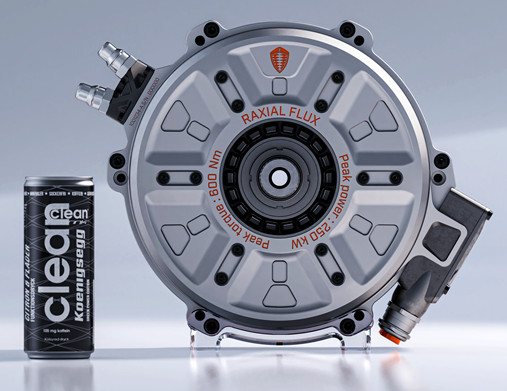
There’s two big takeaways from all this: first, the clock is ticking on that gas-burning ride you’ve got parked outside, and second, EV technology is going to have to get better and cheaper in a relatively short amount of time if the industry is going to be able to hit these lofty timetables. We’re already starting to see the needle move, with new lightweight motors, impressive range extension gains, and research into new battery technologies.
But it’s not just the cars themselves that are getting more advanced. In this brave new world, even the roads get in on the act, with pilot programs currently exploring the idea of embedding inductive charging coils into the surface. Millions of cars plugged into their chargers could also provide a nice buffer for the energy grid, so one day, vehicle-grid integration (VGI) might mean your car ends up powering the neighbor’s TV in the middle of the night.
Of course, it’s not all good news. Building these vehicles, and the infrastructure necessary to charge them, means the global demand for things like copper and cobalt will skyrocket. There’s also some worrying security implications of hastily-designed EV chargers getting plugged into the grid en masse.
The Return of Supercon
Of course, no highlight of the previous year in hardware hacking would be complete without mentioning the triumphant return of our very own Hackaday Supercon in Pasadena, California. While we’re immensely proud of the two Remoticons which were held virtually during the COVID-19 lockdowns, there’s simply no substitute for getting a few hundred hackers together in one spot for 72 hours of soldering, coding, and general nerdy merriment. Until Discord can adequately convey the smell of a Twinkie being roasted by a neon sign transformer, in-person events will always have the upper hand.
A particular highlight of this year’s Supercon was the incredible 4-bit badge designed by the legendary Voja Antonic. Whenever we put together an event badge, it’s our fervent hope that it becomes more than a temporary curiosity. We want our badge to stay out on your desk for as long as possible, and that means striking a careful balance — it should be just challenging enough to keep you engaged, but not so difficult that it becomes frustrating. From the response this badge got, it’s clear we hit the target.
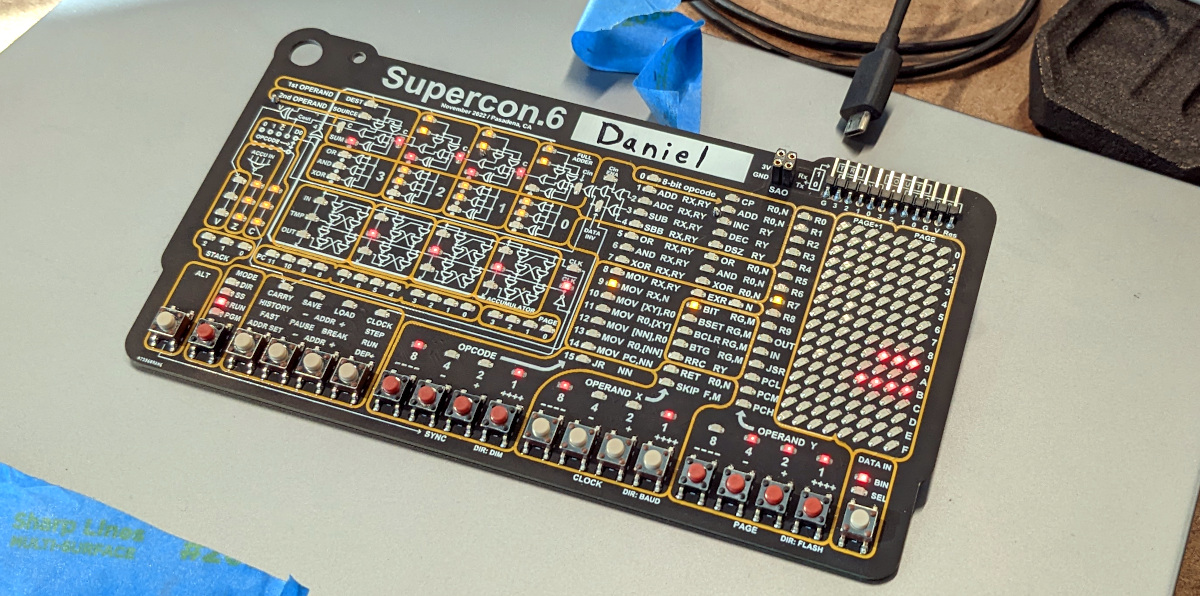
Badge hacking aside, it wouldn’t be Supercon without a slate of fascinating talks from talented hackers. For logistical reasons we could only live stream about half of them during the event, but don’t worry, every talk was recorded and we’re currently in the process of getting them edited and uploaded to the Hackaday YouTube channel.
In fact, some of them have already been released, such as Sam Mulvey’s talk on building your own FM radio station. We hope to release a couple talks a week from this point out, so stay tuned.
Share Your Memories
So what will stand out the most for you when you think back on 2022? Was it some personal triumph? The return of a favorite hacker con? Let us know in the comments. Even if you’re in the other camp, and this year treated you as poorly as the two that came before is, feel free to get it off your chest below. After all, if we don’t learn from history, we’re doomed to repeat it.
If you’re feeling particularly bold, we’d love to hear what your hopes are for 2023. After all, there’s no way this year could be worse than the ones we’ve just gone through…right?

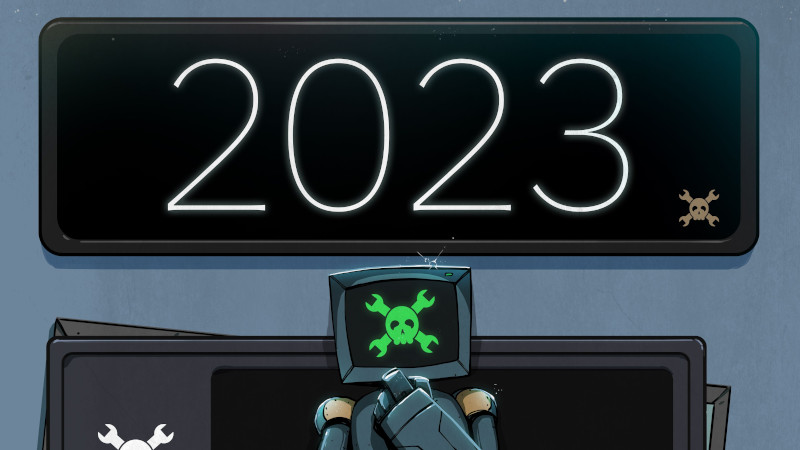
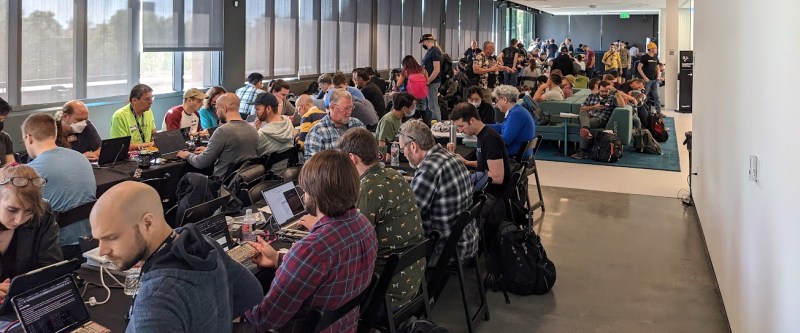














I’m sorry about your stock. With the twitter debacle it looks like Musk is going the same way as Hughes.
The difference being, Hughes was actually a genius.
All that shade, likely because you don’t like his politics or personal opinions.
Real talk: when’s the last time *you* built a company that makes booster stages that land themselves? Have you launched a car into space because you could? Are your modules successfully resupplying the International Space Station? Have you made launch cost relatively inexpensive, so that you can keep a satellite mesh in orbit to provide Internet access where it was previously impossible? In earnest, what have you done to demonstrate *your* genius?
Considering that the real work was done and demonstrated before SpaceX by NASA/JPL and other people were working on the tech before Elon Musk simply poached the engineers to his company, the answer depends on how old the person is and whether they were paying taxes about 40 years ago.
Hot take.
By that logic, weren’t NASA/JPL simply poaching engineers who had the actual ideas? Moreover, why did the US government contract with SpaceX if they could just do it themselves? Further, what does age and taxpayer status during a particular time period have to do with verifiable contributions to science or technology… or demonstrations of genius? Help me understand your reasoning.
>weren’t NASA/JPL simply poaching engineers who had the actual ideas?
After WW2 the government poached a bunch of German engineers, who developed designs which were copied and developed further by private companies. These existing designs were bought by NASA which outsourced the companies to press the technology to work in the Apollo program and later programs.
>what does age and taxpayer status during a particular time period have to do with verifiable contributions to science or technology…
The science and technology was done and tested decades ago; proofs of concepts of everything that SpaceX is doing were basically taxpayer funded in the 90’s and earlier.
The point is, Elon Musk just buys people who are doing the stuff anyways – technology that is already “on the shelf” – then makes wild claims in order to get an investment hype going. Of course there is engineering involved in mashing it all together and making it work, but you don’t really get credit for “inventing more gunpowder” as the saying goes.
People forget that SpaceX isn’t even claiming they invented it – they’re claiming they’re making it “cheaper” – but the actual economics and practicalities of re-usable boosters, or Starlink, Tesla, Hyperloop, etc. are irrelevant in the end. Musk just needs enough people to believe that he really is the boy wonder who can pull off anything. THAT is what makes him money and keeps his business afloat, not the rockets, the cars or the vacuum trains.
Or to put it in other words, if it wasn’t already working in some sense, Elon Musk wouldn’t be doing it now.
What he’s mostly doing is picking up widely known ideas and technologies that other people have already tried but abandoned because they weren’t quite feasible or practical, then spinning them up as if they were. In the end, he’ll just bump into the same problems that made the earlier people give up because they saw it coming – but that’s decades into the future and he’s got the money in advance, and he can always shift the goalposts because people don’t remember what he promised in the first place.
>After all, there’s no way this year could be worse than the ones we’ve just gone through…right?
The Universe: “Hold my beer…”
https://www.cnx-software.com/2022/12/13/raspberry-pi-availability-improves-aims-for-unlimited-supplies-by-h2-2023/
“What we’re calling a part shortage is just business as usual for some folks out there, and being able to make do with what you have on-hand is a skill any good hacker should strive to master.”
Well people got to use all those design skills they learned in school…repeatedly.
” Until Discord can adequately convey the smell of a Twinkie being roasted by a neon sign transformer, in-person events will always have the upper hand.”
Smell-o-vision is going to be so interesting.
I’ve always viewed the Raspi shortage as a good thing. Gets people thinking about being more creative and using Orange Pi boards and other of the multitude of ARM based SBC out there. You have to choose: whine or get busy. And that is my view of most of what has gone on over the past few years. I’m not dead and there are endless possibilities. And there still are.
I enjoyed seeing a small renaissance in the “gut an old laptop” movement. Those boards are def bigger than SBCs, but much more powerful, available, and they help keep stuff out of the waste stream.
Having a built-in UPS is the biggest strength.
Even if I would never think of using a Raspi for a software-only project instead of a thin client (except if there are space constraints), even before the shortage, I do wonder if the GES not emitted by the production of a new raspi compensate the added power consumption of these thin clients compared to a Raspi.
>An outdated thin client will run circles around the Raspberry Pi.
It sure does, at increased TDP and waste of electricity. A makeshift orchestrator of my self-built devices needs not this much power.
All depends on your use case of course. But I agree. The RPI boards are ‘plenty’ powerful for any of my projects (most run headless too). In most cases way overkill, even when ‘not’ using any of the GPIO.
Really spitting hairs here. The Pi 4 uses something like 3 – 5 watts, and a i5 thin client might pull 50. It’s still going to cost you pennies to run, and given the relative cost of the two options (currently) it would take years for the Pi to pay for itself.
Nobody is suggesting you pull the old Pentium 4 tower out of mothballs here.
50W strikes me as a lot.
My 2.8 GHz i7 Thinkpad X220 from a million years ago runs around 10-15 W. With screen, harddrive, intermittent fan, WiFi, etc. Coding, listening to music, but not watching videos. Normal use conditions.
WiFi/Bluetooth uses 4 W. The display uses another 5 W, according to powertop. Idling, with radio off, it says 6.4 W, of which 5.3 W is display. CPU core + misc is 600 mW (again, idle), and the rest is stuff like the USB hub and SSD.
What??? Pennies? No, quite a bit more. Your electricity is obviously cheap, but not all are so fortunate. I shut down my 50W server because it was too expensive (to run 24/7).
>This 335 HP motor weighs just 28 kg (63 lbs).
If you’re neglecting the power electronics, the cooling systems, and the battery itself which still weighs half a ton.
It’s more about the flexibility of pairing it with a small battery for shorter ranges or PHEV systems.
EVs are definitely still obese as automobiles go.
But batteries are limited in power output to some few hundred watts per kilo (without pulling off gimmicks and abusing them), so if you want 335 HP then you pretty much need a huge heavy battery to supply the power, and a big power converter, and a transmission to match.
Whereas the weight of a gas engine is all there is – no cooling system, fuel system, exhaust / emissions systems, heat shielding, lubrication, ancillaries, filters, gearbox…
By ANY measure 335hp in a small 28kg lump is impressive technology, how about appreciating the engineering in that and looking forward to more improvements?
Take a modern turbocharged Wankel motor and remove everything else except the rotor and rotor housing, and the crankshaft. I.e. take only the bare business end of it. That’s your equivalent comparison. That won’t weigh many kilograms, yet can produce over 300+ HP in a racing engine easily.
… battery? At 335 HP it is clearly a bus motor, and the bus should get its electricity by wire. Why do we so often miss out on long existing good solutions?
“The not-so-good news is that after the earlier price increase for the Raspberry Pi 4 2GB to $45 and all CM4 modules costing $5 more, the price for the Raspberry Pi Zero boards will have to be increased as well. Specifically, the price of Raspberry Pi Zero will go from $5 to $10, and Zero W from $10 to $15.”
Like the “$5” pi zero, the 100% marked-up $10 version will come with insane shipping from the well-known ripoff-resellers as well.
These days, there’s so much e-waste around the globe that purchasing any new Raspberry Pi is increasingly difficult to justify, except for the usual clueless hipsters and social media content creators.
The size, the consistent form factor, the pre-built distros, the quality docs, the community projects and numerous examples. It’s great for the clueless hipster, but also for the smart-TV manufacturer.
It’s worth noting that Pis have been scarce for people ordering in quantities < 1,000 while industry has been getting their deliveries fulfilled. If you have the space, I _do_ think you'd be bettter off with an old laptop mobo, plus you probably get a keyboard, screen, and some power infrastructure for free as well, if you want any of that. But you pay for it with your time and effort when setting the thing up. But assigning the convenience premium to "content creators" is misplaced. Samsung values it even more highly.
About that Linux SBC shortage – I understand that if you have product based on RPi board it is hard. But if you are a hobbyst there are many other cheap options – not to mention that they sometimes offer features not found in RPi.
For me it looks more like RPi shortage than Linux SBC shortage – at least on hobbyst market.
The Arduino-RPi ecosystem is kinda like being a chef who’s serving reheated TV-dinners. That can be either by incompetence – like an amateur using the product and the community as a crutch to the point that they don’t even realize how little they actually know – or by professionals being forced into ridiculously “lean” development by management and customers who don’t understand the technology and think it’s just off-the-shelf widgets being put together anyways.
Surprisingly enough I can still easily find Attiny85s and misc. chips like voltage regulators quite easily for very reasonable prices too.
Either the guys I’m buying from have some backroom shady deals or that I’m lucky.